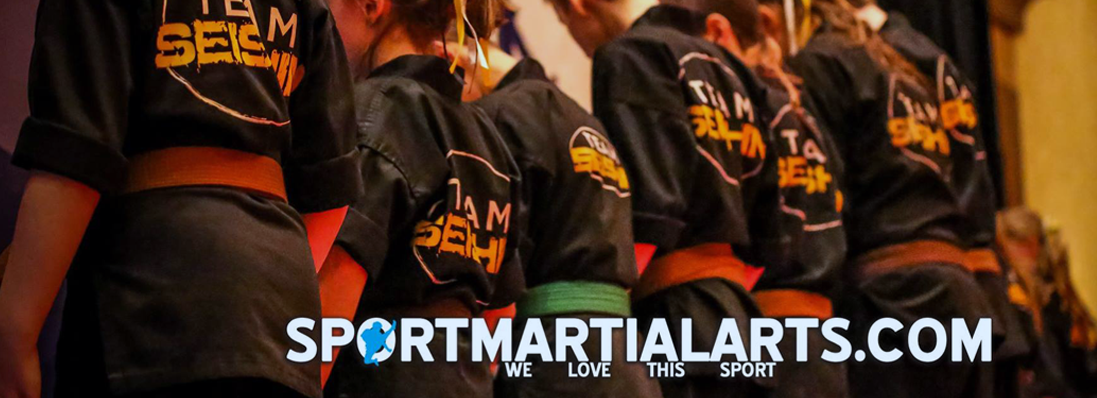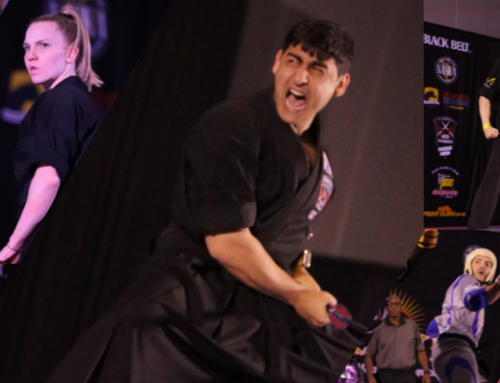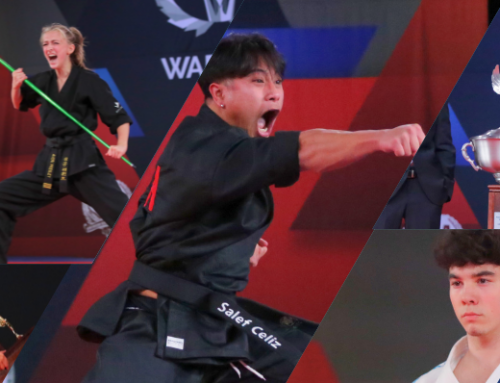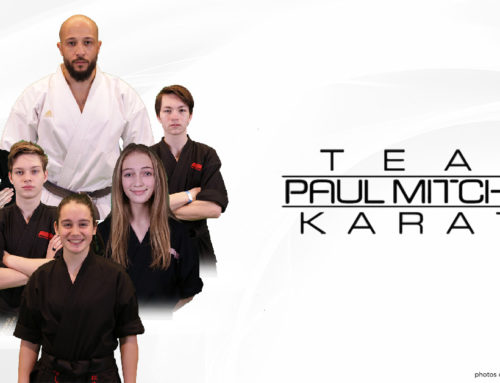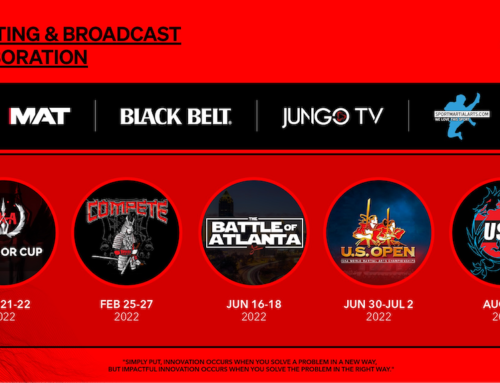Finals shows for underbelt competitors are popping up at tournaments across the United States.
Black belt “grand championships” are part of most sport karate tournaments. Grand champion competition matches divisional winners against each other for an overall champion in forms, fighting or weapons. Sport karate has a well-known history of black belt championships. Typically, non-black belt (underbelt) competitors compete in their individual divisions and then their day is done. There is no competition between underbelts to determine an overall champion.
Tournaments are changing with underbelt finals at many major events. Underbelt finals are not a new idea. Research shows that as far back as 1995 and earlier, underbelt grand championships were awarded at the Canadian Open. The winners were David Derrick (adult forms), Kyle Helf (junior forms) and Jeff Joslin (adult weapons). Source, Black Belt Magazine, October, 1995.
Promoters try different finals concepts and formats for underbelt shows. At a few events, the finals are actual grand championship competitions involving of all first place winners. Other finals are face offs between selected divisions. Some finals are demonstrations by top underbelt competitors and a few events include only forms and weapons. Other events include things like junior team fighting and demo team competition that would not be included in the more prestigious black belt finals.
Finals that focus on underbelts have positive and negative aspects. Often an underbelt show can be taxing on events and event staff as it requires twice as much work to produce two shows. Giving underbelts their own forum for great recognition could have the chilling effect. Underbelts may feel they have reached their pinnacle prior to reaching black belt level. The result could be underbelts ending their competition careers before reaching black belt.
Underbelt finals events may also detract from the popularity of the black belt finals. Many people watch finals to see a favorite competitor, teammate or student. All levels of finals run for a few hours most of the time. After watching an underbelt event, many families will opt to skip the black belt finals, leaving the audience lacking for the big show.
The positives of underbelt finals are also great. They are an incentive to continue competing and working hard. Furthermore, families appreciate the recognition and this is good will for the promoter. Underbelts in the finals get a chance to work on stage presence. This helps with the transition to competing at a high level once the competitor reaches black belt. Finally, the finals are a great way for promoters to scale their black belt show. It allows them to control length and content with another option for recognition to competitors in various divisions.
Regardless of the pros and cons, underbelt finals and shows appear here to stay. Promoters should take note of the new standard and underbelts are starting to demand this feature at events. SportMartialArts.com is committed to live streaming underbelt shows for covered events with them. You can see some awesome performances by underbelts that were live streamed by SportMartialArts.com at http://www.sma-tv.com or on our YouTube page at http://www.youtube.com/sportmartialarts
SportMartialArts.com is the largest media outlet for open sport karate tournament news and information. Over a quarter of a million people turn to SportMartialArts.com’s online news, live streams, photos and social media to keep up-to-date on the dynamic sport of open martial arts competition. SportMartialArts.com – We Love This Sport!
www.sportmartialarts.com
#sportmartialarts #underbeltfinals #smatv #livestreams #sportkarate
